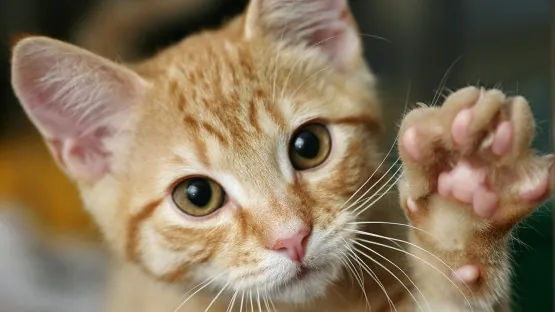
New Initiative Launched to Combat Avian Flu Spread in Cats
2025-06-12
Author: Jia
The Deadly Threat of H5N1 to Cats
Cats infected with the H5N1 avian influenza face a grim fate, with up to 70% of those affected succumbing to the disease. Despite this alarming statistic, the transmission dynamics of the virus among felines remain poorly understood. Questions include whether cats can transmit the virus to other animals or even humans, and how prevalent infections are in community cat populations.
Cornell Feline Health Center Takes Action
In response to this urgent health crisis, the Cornell Feline Health Center (CFHC) is launching an initiative aimed at uncovering the mysteries surrounding H5N1 in cats. Dr. Bruce Kornreich, director of CFHC, emphasizes their dedication to tackling pressing public and animal health risks through vital research.
The Surveillance Consortium Unveiled
The CFHC Feline H5N1 Surveillance Consortium is set to roll out a comprehensive surveillance program targeting cats in shelters, clinics, and veterinary hospitals across New York State. This pilot project will establish testing protocols and logistics before broadening its scope nationally to monitor feline H5N1 cases and other infectious diseases.
Innovative Research Approaches
Beyond identifying current infections, the initiative will also investigate existing antibodies that signal previous encounters with H5N1. Additionally, genomic analyses of viral samples from affected cats will be conducted to better understand the virus's mechanics, particularly its hemagglutinin protein, crucial for viral entry into host cells.
Aiming for Broader Impacts
The data generated through this initiative aims to inform best practices for monitoring, controlling, and potentially preventing future H5N1 outbreaks in cats and beyond. Public health officials and veterinary professionals will utilize these insights to prepare for impending zoonotic risks.
Protecting Felines and Beyond
Dr. Lorin Warnick, Dean of Veterinary Medicine, highlights that by focusing on cats' roles in the ecology of H5N1, this initiative not only safeguards feline health but also provides critical data that could help reduce the transmission of this rapidly evolving virus to other species, including humans.

 Brasil (PT)
Brasil (PT)
 Canada (EN)
Canada (EN)
 Chile (ES)
Chile (ES)
 Česko (CS)
Česko (CS)
 대한민국 (KO)
대한민국 (KO)
 España (ES)
España (ES)
 France (FR)
France (FR)
 Hong Kong (EN)
Hong Kong (EN)
 Italia (IT)
Italia (IT)
 日本 (JA)
日本 (JA)
 Magyarország (HU)
Magyarország (HU)
 Norge (NO)
Norge (NO)
 Polska (PL)
Polska (PL)
 Schweiz (DE)
Schweiz (DE)
 Singapore (EN)
Singapore (EN)
 Sverige (SV)
Sverige (SV)
 Suomi (FI)
Suomi (FI)
 Türkiye (TR)
Türkiye (TR)
 الإمارات العربية المتحدة (AR)
الإمارات العربية المتحدة (AR)